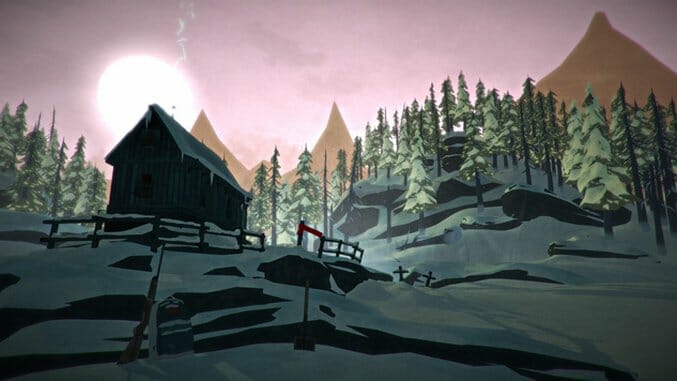The Long Dark, Early Access and the Drawbacks of Expectations

Until recently, I never thought that playing a game in Early Access could taint my impression of its full release. After all, Early Access games start out as a rough product, shaped by time and player feedback, and so it’s expected that the final release is the best one. With that in mind, most players, like myself, know to go into the experience with a somewhat nebulous impression of what the game is, and will be, trusting that the kinks will all be worked out by the end. So far that has been the case with a lot of Early Access games, even the ones I don’t feel are quite “there” yet, like ARK: Survival Evolved. Whatever state the game is in now, it’ll be better by the time it comes out.
But then there’s The Long Dark, which finally saw an official release at the beginning of August after about three years of development. I bought the game shortly after it debuted in Early Access on Steam and have been periodically checking in with the creator, Raphael Van Lierop, over the years as development has progressed. Initially, to keep the “real” part of the game, the narrative, under wraps, Hinterland only released the sandbox mode, a bare bones version of The Long Dark that was very light on instructions—or any distinctive, stylized art. Without cut scenes or some of the finer details added, the game was not unlike its source material: minimalistic, realistic and essentialist. Use only what you need to get by. The isolationist themes created by the game’s mechanics were enhanced by their presentation.
Now, with the official release, those mechanics are given context, with an enhanced user interface, a story mode and, perhaps most helpfully, a series of tips and instructions leading the player through the major points of in-game survival. Much of the mystery has been stripped as the game takes on typical game conventions. Music, cutscenes, dialogue sequences, voice actors, character art: so much of what we understand as a baseline for a game’s aesthetic identity was only just given to The Long Dark now. I’d played the sandbox mode for so long that I almost forgot the game was “supposed” to have all those other things. Now that it does, I’m not sure how to feel about it.
I’m a survival games junkie, and I’ve played many over the years, from the big titles to the niche shovelware on Steam, and often the reviews and comments I see are frustrating as a fan of The Long Dark. I read them and think, “Pal, the game you’re looking for is The Long Dark.” Players have wanted an increasingly authentic experience out of their survival games, and so far, The Long Dark comes closest to mimicking the real life experience so many of them seem to desire. I’ve sensed for years that survival games would begin to separate themselves from their origins in horror, so for that I’m an enthusiastic supporter of The Long Dark on mechanics, and its nurturing of the emerging genre, alone.
So why is The Long Dark suddenly such a disappointment?
I’ve given this a lot of thought, especially in terms of my increasing obsolescence as an aging games reviewer. I know that some games are ruined for me by the fact that I’ve seen too much. But in this case it may be the fact that I went into the game with expectations. In training materials I wrote years ago as a managing editor, I advised my writers, when writing their reviews, to pause and assess any disappointment they had with a game, and question where that came from. Often it’s rooted assumptions made in anticipation. So the goal is to pinpoint where those expectations came from. Is it based in what the press materials led you to believe? From what you’ve experienced with similar titles in its genre? From the professional pedigree of the studio and its developers? It’s hard to figure out why, as a critic, we do not like one thing or the other, but if you can follow the trail, so to speak, and dismantle it piece by piece, the reasons start to unravel, and often it can come down to what we thought or wanted a game to be, rather than what the creator gave us.







































